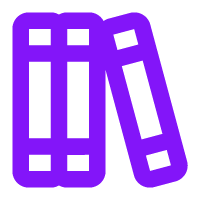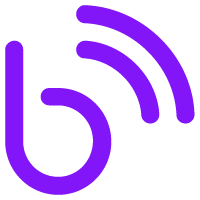With no prior knowledge of machine learning or device-specific deployment, you can deploy a computer vision model to a range of devices and environments using Roboflow Inference.
Project description
🎬 pip install inference
Roboflow Inference is the easiest way to use and deploy computer vision models. Inference supports running object detection, classification, instance segmentation, and even foundation models (like CLIP and SAM). You can train and deploy your own custom model or use one of the 50,000+ fine-tuned models shared by the community.
There are three primary inference interfaces:
- A Python-native package (
pip install inference) - A self-hosted inference server (
inference server start) - A fully-managed, auto-scaling API.
You can run Inference on an edge device like an NVIDIA Jetson, or on cloud computing platforms like AWS, GCP, and Azure.
🏃 Getting Started
Get up and running with inference on your local machine in 3 minutes.
pip install inference # or inference-gpu if you have CUDA
Setup your Roboflow Private API Key
by exporting a ROBOFLOW_API_KEY environment variable or
adding it to a .env file.
export ROBOFLOW_API_KEY=your_key_here
Run an open-source Rock, Paper, Scissors model on your webcam stream:
import inference
inference.Stream(
source="webcam", # or rtsp stream or camera id
model="rock-paper-scissors-sxsw/11", # from Universe
on_prediction=lambda predictions, image: (
print(predictions) # now hold up your hand: 🪨 📄 ✂️
)
)
[!NOTE]
Currently, the stream interface only supports object detection
Now let's extend the example to use Supervision to visualize the predictions and display them on screen with OpenCV:
import cv2
import inference
import supervision as sv
annotator = sv.BoxAnnotator()
inference.Stream(
source="webcam", # or rtsp stream or camera id
model="rock-paper-scissors-sxsw/11", # from Universe
output_channel_order="BGR",
use_main_thread=True, # for opencv display
on_prediction=lambda predictions, image: (
print(predictions), # now hold up your hand: 🪨 📄 ✂️
cv2.imshow(
"Prediction",
annotator.annotate(
scene=image,
detections=sv.Detections.from_roboflow(predictions)
)
),
cv2.waitKey(1)
)
)
👩🏫 More Examples
The /examples directory contains code samples for working with and extending inference including using foundation models like CLIP, HTTP and UDP clients, and an insights dashboard, along with community examples (PRs welcome)!
🎥 Inference in action
Check out Inference running on a video of a football game:
https://github.com/roboflow/inference/assets/37276661/121ab5f4-5970-4e78-8052-4b40f2eec173
💻 Why Inference?
Inference provides a scalable method through which you can manage inferences for your vision projects.
Inference is composed of:
-
Thousands of pre-trained community models that you can use as a starting point.
-
Foundation models like CLIP, SAM, and OCR.
-
A tight integration with Supervision.
-
An HTTP server, so you don’t have to reimplement things like image processing and prediction visualization on every project and you can scale your GPU infrastructure independently of your application code, and access your model from whatever language your app is written in.
-
Standardized APIs for computer vision tasks, so switching out the model weights and architecture can be done independently of your application code.
-
A model registry, so your code can be independent from your model weights & you don't have to re-build and re-deploy every time you want to iterate on your model weights.
-
Active Learning integrations, so you can collect more images of edge cases to improve your dataset & model the more it sees in the wild.
-
Seamless interoperability with Roboflow for creating datasets, training & deploying custom models.
And more!
📌 Use the Inference Server
You can learn more about Roboflow Inference Docker Image build, pull and run in our documentation.
- Run on x86 CPU:
docker run -it --net=host roboflow/roboflow-inference-server-cpu:latest
- Run on NVIDIA GPU:
docker run -it --network=host --gpus=all roboflow/roboflow-inference-server-gpu:latest
👉 more docker run options
- Run on arm64 CPU:
docker run -p 9001:9001 roboflow/roboflow-inference-server-arm-cpu:latest
- Run on NVIDIA Jetson with JetPack
4.x:
docker run --privileged --net=host --runtime=nvidia roboflow/roboflow-inference-server-jetson:latest
- Run on NVIDIA Jetson with JetPack
5.x:
docker run --privileged --net=host --runtime=nvidia roboflow/roboflow-inference-server-jetson-5.1.1:latest
Extras:
Some functionality requires extra dependencies. These can be installed by specifying the desired extras during installation of Roboflow Inference.
| extra | description |
|---|---|
clip |
Ability to use the core CLIP model (by OpenAI) |
gaze |
Ability to use the core Gaze model |
http |
Ability to run the http interface |
sam |
Ability to run the core Segment Anything model (by Meta AI) |
Note: Both CLIP and Segment Anything require pytorch to run. These are included in their respective dependencies however pytorch installs can be highly environment dependent. See the official pytorch install page for instructions specific to your enviornment.
Example install with CLIP dependencies:
pip install "inference[clip]"
Inference Client
To consume predictions from inference server in Python you can
use the inference-sdk package.
pip install inference-sdk
from inference_sdk import InferenceHTTPClient
image_url = "https://media.roboflow.com/inference/soccer.jpg"
# Replace ROBOFLOW_API_KEY with your Roboflow API Key
client = InferenceHTTPClient(
api_url="http://localhost:9001", # or https://detect.roboflow.com for Hosted API
api_key="ROBOFLOW_API_KEY"
)
with client.use_model("soccer-players-5fuqs/1"):
predictions = client.infer(image_url)
print(predictions)
Visit our documentation to discover capabilities of inference-clients library.
Single Image Inference
After installing inference via pip, you can run a simple inference
on a single image (vs the video stream example above) by instantiating
a model and using the infer method (don't forget to setup your
ROBOFLOW_API_KEY environment variable or .env file):
from inference.models.utils import get_roboflow_model
model = get_roboflow_model(
model_id="soccer-players-5fuqs/1"
)
# you can also infer on local images by passing a file path,
# a PIL image, or a numpy array
results = model.infer(
image="https://media.roboflow.com/inference/soccer.jpg",
confidence=0.5,
iou_threshold=0.5
)
print(results)
Getting CLIP Embeddings
You can run inference with OpenAI's CLIP model using:
from inference.models import Clip
image_url = "https://media.roboflow.com/inference/soccer.jpg"
model = Clip()
embeddings = model.embed_image(image_url)
print(embeddings)
Using SAM
You can run inference with Meta's Segment Anything model using:
from inference.models import SegmentAnything
image_url = "https://media.roboflow.com/inference/soccer.jpg"
model = SegmentAnything()
embeddings = model.embed_image(image_url)
print(embeddings)
🏗️ inference Process
To standardize the inference process throughout all our models, Roboflow Inference has a structure for processing inference requests. The specifics can be found on each model's respective page, but overall it works like this for most models:

✅ Supported Models
Load from Roboflow
You can use models hosted on Roboflow with the following architectures through Inference:
- YOLOv5 Object Detection
- YOLOv5 Instance Segmentation
- YOLOv8 Object Detection
- YOLOv8 Classification
- YOLOv8 Segmentation
- YOLACT Segmentation
- ViT Classification
Core Models
Core Models are foundation models and models that have not been fine-tuned on a specific dataset.
The following core models are supported:
- CLIP
- L2CS (Gaze Detection)
- Segment Anything (SAM)
📝 License
The Roboflow Inference code is distributed under an Apache 2.0 license. The models supported by Roboflow Inference have their own licenses. View the licenses for supported models below.
| model | license |
|---|---|
inference/models/clip |
MIT |
inference/models/gaze |
MIT, Apache 2.0 |
inference/models/sam |
Apache 2.0 |
inference/models/vit |
Apache 2.0 |
inference/models/yolact |
MIT |
inference/models/yolov5 |
AGPL-3.0 |
inference/models/yolov7 |
GPL-3.0 |
inference/models/yolov8 |
AGPL-3.0 |
Inference CLI
We've created a CLI tool with useful commands to make the inference usage easier. Check out docs.
🚀 Enterprise
With a Roboflow Inference Enterprise License, you can access additional Inference features, including:
- Server cluster deployment
- Device management
- Active learning
- YOLOv5 and YOLOv8 commercial license
To learn more, contact the Roboflow team.
📚 documentation
Visit our documentation for usage examples and reference for Roboflow Inference.
🏆 contribution
We would love your input to improve Roboflow Inference! Please see our contributing guide to get started. Thank you to all of our contributors! 🙏
💻 explore more Roboflow open source projects
| Project | Description |
|---|---|
| supervision | General-purpose utilities for use in computer vision projects, from predictions filtering and display to object tracking to model evaluation. |
| Autodistill | Automatically label images for use in training computer vision models. |
| Inference (this project) | An easy-to-use, production-ready inference server for computer vision supporting deployment of many popular model architectures and fine-tuned models. |
| Notebooks | Tutorials for computer vision tasks, from training state-of-the-art models to tracking objects to counting objects in a zone. |
| Collect | Automated, intelligent data collection powered by CLIP. |
Project details
Release history Release notifications | RSS feed
Download files
Download the file for your platform. If you're not sure which to choose, learn more about installing packages.
Source Distributions
Built Distribution
Hashes for inference_core-0.9.7-py3-none-any.whl
| Algorithm | Hash digest | |
|---|---|---|
| SHA256 | 495bc4327ecc08ec1e56b00993f9d268ec795ce1b766be26bff7868c724c2c41 |
|
| MD5 | b2c0d723e539e1b781d55338a777f9ca |
|
| BLAKE2b-256 | 7ad22892d56b38e457458f83d0b847d8c58406a487dcb1342085adb628df7de2 |























